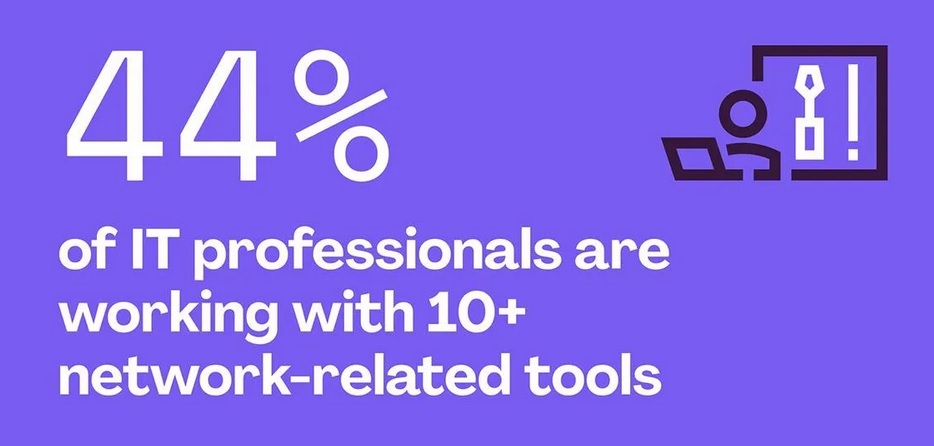
In 2024 the number one challenge facing IT teams is a lack of skilled workers, and many are turning to automation as an answer, according to IT Trends: 2024 Industry Report.
Compared to 2023, 24% more IT professionals reported planned investment in automation in 2024, and 96% are using at least one AI or ML tool to improve efficiency.

Source: Auvik
Responses from managed service providers and internal IT teams reveal a pressing need for greater automation to increase IT efficiency. Yet the report also indicates a wide disparity between how management perceives IT practices, versus what is really happening among IT workers in the field.
The top network-related activity that IT pros want to pursue involves researching new technologies, but their biggest obstacle in doing so involves time constraints due to the ongoing burden of responding to user requests. Nearly two-thirds of IT staff (64%) spend between 10 and 20 hours per week resolving requests for end users, while 16% of respondents spend more than 20 hours per week to address such reactive tasks.
Only half of respondents indicated that network planning is regularly performed at their companies. Network planning involves such critical security tasks as implementing hardware patches and replacements, and making needed updates to support new technology. The research suggests that network planning is taking a backseat because IT professionals are overwhelmed with day-to-day tasks and troubleshooting requests from end users, to the point that even basic network planning tasks like hardware patches are neglected.
Since the pandemic, nearly all IT professionals have come to support at least some level of remote work (90%). As a result, tool sprawl has clearly become a growing concern. Nearly half of respondents (44%) work with more than ten network-related tools to do their jobs, and nearly three-in-five organizations use more than 50 SaaS applications. Unsurprisingly, one in four respondents cited shadow IT — when users adopt software applications that are not authorized by IT — as a high priority issue to tackle in 2024.
The report findings also reveal a troubling discrepancy between the perceptions of C-suite executives and the experiences of IT technicians. C-suite respondents are more likely to report a higher level of confidence in the network toolset, with 58% who strongly agree their organization's current network toolset is meeting the needs of remote workers. IT technicians are the least likely to report a high level of confidence in the toolset, with only 35% who strongly agree.
Management also reported a higher level of confidence in such basic tasks as daily configuration updates. C-suite executives are twice as likely to report daily network configuration backups than technicians. This discrepancy indicates either the C-suite does not fully appreciate the level of work going into these backups, or that technicians are so overwhelmed with other tasks they are struggling to keep up with company policy when it comes to backups. This data describes a clear call for help from IT teams for better resources and tooling to aid in these essential tasks and get on the same page as management.
To this end, the 2024 report shows a focus on increased investments in IT, particularly in cloud security, network security and cloud management tooling. The majority (86%) of respondents reported an increased budget for 2024, and it is clear that teams have a need for tools that will help IT do more with less. As we are seeing, increased network automation can be an overriding solution to offset these challenges, including persistent talent shortages, resource constraints, and the complexity of managing numerous tools.
Methodology: This year's survey includes findings from 2,100 IT professionals, highlighting the demands for IT teams challenged by limited resources and talent shortages. The respondents reflected a range of industries including financial services, healthcare, manufacturing, government, and education.
